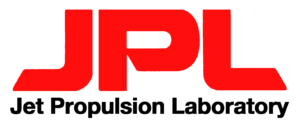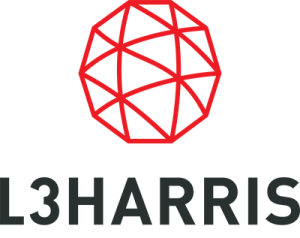The Role of Data-Driven Recruitment in Modern Manufacturing

Modern manufacturing is evolving rapidly, driven by complex supply chains, technological advancements, and growing competition. With challenges like skill shortages and high turnover rates, manufacturing recruitment now demands smarter, more strategic approaches. Data-driven recruitment offers a solution by using analytics to optimize hiring, reduce costs, and secure top talent.
Understanding Data-Driven Recruitment in Manufacturing
In modern manufacturing, precision and speed are non-negotiable, and so is hiring the right talent. Traditional recruitment often misses the mark. By contrast, a data-driven approach allows companies to make informed, strategic hiring decisions that align directly with operational goals. With the support of executive search services, manufacturers can attract specialized, high-performing candidates who drive innovation and reduce costly turnover.
What is Data-Driven Recruitment?
Modern manufacturing recruitment relies on measurable insights to enhance accuracy and reduce risk throughout the hiring process. A metrics-driven approach replaces guesswork with actionable data, allowing hiring teams to evaluate candidates based on verified performance indicators, skill alignment, and future potential.
- Pinpoint high-impact talent: Review work history, technical qualifications, and behavioral patterns to determine candidate readiness for complex manufacturing roles.
- Refine sourcing methods: Track the success rate of various recruitment channels, such as professional services executive search firms, job boards, or referrals, to prioritize those that deliver results.
- Forecast job performance: Use historical and predictive data models to evaluate whether a candidate will thrive in the long term and minimize costly mis-hires.
This analytical framework aligns recruitment efforts with broader operational objectives. It ensures that new hires contribute meaningfully to growth, productivity, and workforce stability.
Why Data Matters in Modern Manufacturing Recruitment
Modern manufacturing is more complex than ever. With advancements in automation, robotics, and global supply chains, the skills required for success continue to evolve. Simply finding candidates who meet the basic job description is no longer enough. Companies need leaders and specialists who can adapt to new technologies, drive innovation, and maintain high levels of productivity.
Data-driven recruitment helps manufacturing companies meet these challenges head-on by providing deeper insights into the talent pool and market trends. Here’s how data enhances recruitment in manufacturing:
- Analyzing Market Trends: By tracking hiring patterns, skills in demand, and competitor movements, companies can anticipate shifts in the labor market and adjust their hiring strategies accordingly. For example, a spike in demand for aerospace engineers would prompt proactive sourcing efforts through specialized aerospace recruitment channels.
- Matching Skills with Evolving Needs: Data allows recruiters to map candidate competencies against current and future job requirements. This is especially crucial in industries like aerospace and aviation, where evolving regulations and technologies demand highly specialized knowledge. Executive search firms specializing in aviation recruiting can use data insights to connect manufacturers with top-tier talent.
- Forecasting Future Hiring Needs: Historical hiring data helps predict future staffing requirements. For instance, if a company is planning to expand its operations into additive manufacturing, data can highlight potential skill gaps and guide early recruitment efforts.
By integrating data into the recruitment process, manufacturers can make better-informed hiring decisions, ensuring they secure candidates who fit today’s needs and have the potential to grow with the company.
Benefits of Data-Driven Recruitment for Manufacturers
Manufacturers need more than speed to stay competitive. They need precision in every hire. Talent analytics helps refine recruitment strategies by identifying role-specific skills, analyzing workforce trends, and reducing mismatches. With data guiding hiring decisions, manufacturers minimize turnover, control recruitment costs, and improve productivity across departments. This approach replaces guesswork with clear, measurable insights that build stronger teams and long-term workforce resilience.
Improving Hiring Accuracy and Reducing Turnover
High turnover rates can cripple manufacturing operations, leading to production delays, increased costs, and decreased morale. Traditional recruitment methods often rely on subjective assessments, increasing the risk of poor hiring decisions. Data-driven recruitment tackles this issue head-on by using analytics to enhance hiring precision and ensure long-term employee retention.
Here’s how data improves hiring accuracy and reduces turnover:
- Targeted Candidate Matching: By analyzing candidate data—skills, experience, certifications, and even work styles—recruiters can match candidates to roles with precision. This reduces the chances of mismatches and ensures that new hires have the technical capabilities and soft skills required for success.
- Predictive Analytics for Long-Term Success: Advanced recruitment platforms use predictive analytics to assess a candidate’s likelihood of long-term success. By evaluating past job stability, performance trends, and cultural fit, recruiters can predict which candidates are most likely to thrive within the company.
- Pattern Recognition in Past Hires: Data analysis of previous hires can reveal patterns that led to successful placements. For example, if candidates from certain training programs consistently outperform others, that insight can inform future recruitment efforts.
By relying on these data points, manufacturers significantly reduce turnover, leading to more stable teams, increased productivity, and lower recruitment costs. A data-driven approach ensures that new hires are qualified and aligned with the company’s long-term goals.
Enhancing Efficiency and Reducing Costs
Traditional recruitment methods often drain time and resources due to manual tasks and inconsistent sourcing strategies. In manufacturing, where workforce gaps delay production and strain operations, using recruitment data delivers measurable improvements in both speed and cost control.
Key outcomes of a metrics-informed hiring approach include:
- Faster Hiring Timelines: Tools like applicant tracking systems (ATS) and AI-powered screening platforms eliminate bottlenecks in candidate selection. Manufacturers can fill essential roles faster, keeping production schedules on track.
- Smarter Channel Selection: Analyzing the performance of various recruitment sources—executive search services, job boards, or referrals—helps direct investment toward the channels that consistently attract qualified talent.
- Better Resource Use: With data highlighting top-tier candidates early, hiring teams avoid wasting time on mismatches and focus efforts on high-impact prospects.
- Improved Onboarding Outcomes: When the right person is matched to the right role, ramp-up time is shorter. This reduces training overhead and helps new hires deliver value sooner.
By improving process speed, reducing hiring friction, and aligning candidate quality with business needs, manufacturers gain long-term savings and stronger workforce performance.
Key Metrics for Measuring Recruitment Success
Hiring in manufacturing directly affects productivity and profitability, yet without clear metrics, recruitment becomes guesswork. Data-driven recruitment solves this by using key performance indicators (KPIs) to track success, reduce hiring mistakes, and guide continuous improvement. By focusing on specific data points, manufacturers can streamline their hiring process, cut costs, and improve talent quality across the board.
Critical KPIs in Manufacturing Recruitment
Tracking recruitment success starts with the correct set of KPIs. These metrics provide valuable insights into how well the hiring process aligns with business goals and highlights areas that need improvement. Here are the most critical KPIs every manufacturing company should monitor:
- Time-to-Fill: This measures the days it takes to fill an open position. Reducing time-to-fill is crucial in manufacturing, where vacancies can halt production lines or strain existing teams. A longer time-to-fill may indicate inefficiencies in the sourcing or screening process, while a shorter time reflects a streamlined, effective strategy.
- Cost-per-Hire: Hiring new employees involves various expenses, including advertising, recruiter fees, onboarding costs, and time spent by HR staff. Cost-per-hire tracks the total investment required to bring a new employee on board. By analyzing this metric, manufacturers can identify cost-saving opportunities and ensure recruitment budgets are spent wisely.
- Quality-of-Hire: It’s not enough to hire quickly and cheaply, and the quality of new hires is paramount. This metric assesses newly hired employees’ performance, productivity, and retention. High-quality hires often lead to increased productivity, lower turnover rates, and better team dynamics. Measuring this requires ongoing performance evaluations and feedback from supervisors.
- Turnover Rate: High turnover can significantly drain resources and disrupt manufacturing workflows. This KPI monitors how frequently employees leave the company, voluntarily or involuntarily. A high turnover rate may indicate issues with the hiring process, onboarding, or company culture, prompting deeper analysis.
- Candidate Experience: In today’s competitive job market, a candidate’s experience during the hiring process can influence their decision to accept an offer. This KPI evaluates the applicant’s journey, from initial contact to final decision, ensuring the process is smooth, transparent, and engaging. A positive candidate experience strengthens the employer brand and attracts top talent.
By focusing on these KPIs, manufacturers can refine their recruitment strategies, improve hiring accuracy, and reduce costs, leading to stronger, more stable teams.
Using Predictive Analytics to Improve Hiring Outcomes
While traditional KPIs offer valuable insights, predictive analytics takes recruitment further. It doesn’t just analyze past and present data—it forecasts future hiring trends and outcomes. For manufacturers, this means making proactive hiring decisions that align with evolving industry demands.
Here’s how predictive analytics enhances recruitment success:
- Identifying High-Potential Candidates: By analyzing historical data, predictive models can pinpoint candidates most likely to excel in specific manufacturing roles. Factors such as previous job performance, educational background, and even soft skills are considered to forecast long-term success.
- Forecasting Future Skill Requirements: The manufacturing landscape constantly evolves, with emerging technologies like automation, robotics, and AI reshaping job roles. Predictive analytics helps companies anticipate future skill gaps and plan recruitment strategies accordingly, ensuring the workforce remains future-ready.
- Anticipating Recruitment Challenges: Market fluctuations, labor shortages, and shifting candidate expectations can disrupt hiring plans. Predictive models analyze these variables to anticipate potential roadblocks, allowing recruiters to adjust their strategies proactively.
Executive search services that incorporate predictive analytics offer manufacturers a significant advantage. These services go beyond simply filling open roles—they strategically source candidates who meet current needs and align with long-term organizational goals. Top executive search firms leverage predictive analytics to ensure that every hire adds measurable value, reducing turnover and boosting overall team performance.
Using Recruitment Analytics to Strengthen and Diversify Teams
Building diverse teams in manufacturing isn’t just about meeting inclusion goals. It’s about enhancing creativity, problem-solving, and overall business performance. Diverse teams bring unique perspectives that fuel innovation and improve decision-making.
However, achieving this diversity requires more than traditional recruitment methods. Recruitment analytics offers manufacturers a powerful tool to reduce bias, expand talent pools, and create stronger, more dynamic teams.
Identifying and Reducing Hiring Bias
Unconscious bias is one of the most significant barriers to building diverse teams. Even the most well-intentioned hiring managers can make decisions influenced by hidden biases related to gender, ethnicity, age, or educational background. These biases can lead to a less diverse workforce, limiting innovation and impacting overall business success.
Data-driven recruitment provides a solution by introducing objectivity into the hiring process. Here’s how analytics helps minimize bias and create fairer, more inclusive hiring practices:
- Standardizing Candidate Assessments: Traditional interviews often allow subjective opinions to influence hiring decisions. By implementing standardized assessments, companies can evaluate candidates based solely on their skills, experience, and potential, ensuring the same criteria judge all applicants.
- Anonymous Resume Reviews: Removing identifying information, such as names or graduation dates, from resumes during initial screenings helps hiring teams focus on qualifications and achievements. This method reduces the influence of unconscious bias and promotes a more objective evaluation process.
- Analyzing Recruitment Patterns: Recruitment analytics can highlight trends that perpetuate bias. For instance, if most hires come from the same universities or regions, it may indicate a narrow talent pool. By identifying these patterns, companies can adjust their strategies to reach more diverse candidates.
Manufacturers can foster fairer hiring practices and create a more inclusive workplace through these methods. This approach supports diversity goals and leads to stronger teams that drive better business outcomes.
Using Data Insights to Attract Diverse Talent Pools
Eliminating bias is only part of the solution. Actively seeking out underrepresented talent is equally important. Recruitment analytics helps companies expand their reach and attract a broader range of candidates by providing data-driven insights into sourcing and engagement strategies.
Here’s how analytics supports this effort:
- Identifying Effective Sourcing Channels: Data can reveal which job boards, social media platforms, or industry-specific forums yield the most diverse candidate pools. By focusing on channels that attract underrepresented groups, manufacturers can ensure they are reaching a wider audience.
- Optimizing Job Descriptions: The language used in job postings can either attract or deter candidates. Analytics tools can scan descriptions for biased language and suggest more inclusive alternatives. This ensures that job ads appeal to a broader range of candidates, increasing the chances of attracting diverse talent.
- Tracking Diversity Metrics: Throughout the recruitment process, analytics can track key diversity metrics, such as the demographics of applicants at each stage. If diverse candidates are consistently eliminated at a particular stage, companies can investigate and address potential issues.
Partnering with executive search services that specialize in data-driven recruitment can further enhance these efforts. Top executive search firms use advanced analytics to identify and attract diverse talent, ensuring that manufacturers have access to high-performing candidates from a wide range of backgrounds. These firms bring deep industry knowledge and expertise, helping manufacturers strengthen their leadership teams while promoting diversity and inclusion.
The Future of Data-Driven Recruitment in Manufacturing
Data-driven recruitment is no longer a trend; it is a necessity for manufacturers aiming to stay competitive. As industries evolve, workforce demands become more complex, making traditional hiring methods less effective. Leveraging analytics gives companies a strategic edge, enabling smarter hiring decisions, reducing costs, and building agile, high-performing teams that can adapt to future challenges.
As one of the top executive search firms, BOB Search integrates advanced executive search services with powerful data analytics. Our performance-based search system ensures that every hire aligns with your company’s goals, culture, and vision for the future.
We help manufacturers secure the leadership talent they need to drive progress, boost productivity, and stay ahead of industry trends. Contact BOB Search today to learn how we can transform your recruitment strategy and help you build high-performing, future-ready teams that lead your industry forward.

























